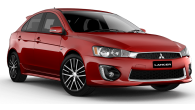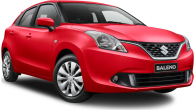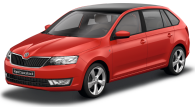Recreating a classic model from the past like VW did with the new Beetle is a huge gamble. It can be a huge hit and the company’s decision makers can look like heroes, or it can be an abject failure and those who made the decision can end up looking like zeroes.
The problem with retro cars like the new Beetle, and the new BMW-built Mini, is they can often be subject to the fickleness of fashion. They can be the in-thing one day, but out the next.
In 2000 when VW launched the new Beetle we were going through a period of motoring nostalgia, and many companies were tapping into the charisma of past models to sell their new ones.
Thankfully few reproduced the past, most carmakers were able to distil the essential elements of what made their classics popular and tastefully incorporated them into the new models leaving the flaws of the old cars behind.
While the old Beetle is very charismatic, few people today would accept its rattly rear-mounted engine and the dubious handling that went with it, and its bare bones interior. It might have been fine in the ’50s, but it’s not good enough for the noughties.
MODEL WATCH
VW’s designers knew enough about the appeal of the old Beetle to know that it was the cute looks that makes us all dewy eyed today. They understood that time heals all motoring ills and, apart from enthusiasts, few of today’s motorists really knew much about the old Beetle at all.
All they saw was the cute shape that made the old model stand out in the post-WW2 years, and they were smart enough to modernise the original curves into a shape that is just as appealing today as the old was one 50 years or more ago. The connection to the old model ended with the shape as there was nothing else that really reflected the original Beetle. That’s certainly true of the platform and mechanical package, which was thoroughly modern and nothing like the original.
The original Beetle had an air-cooled flat four-cylinder engine mounted behind the rear axle. It was quite an economical unit and gave quite respectable performance for the times, but it was noisy and being mounted behind the rear axle acted like a pendulum when cornering.
If that wasn’t enough it had a swing axle rear suspension arrangement which would have you spinning into the shrubs if you lifted your foot off the accelerator at the wrong time while in the process of negotiating a curve. The new Beetle had none of that. It was built on a sensible front-drive platform like that used in the Golf.
The engine was water-cooled, mounted at the front, and drove the front wheels like every other modern small car, which is what it was under the classic skin. With a capacity of 2.0 litres the Beetle’s four-cylinder engine had a single overhead camshaft, was fuel-injected and put out 85 kW at 5200 revs and 170 Nm at 2400 revs. There was a choice of a five-speed manual gearbox or four-speed auto. When the manual was chosen the new Beetle would rush to 100 km/h in 10.9 secs, the auto took almost two seconds longer for the journey. Top speed was in excess of 180 km/h for both, a speed that was well beyond the old Beetle.
The new car’s suspension was also a revelation, with MacPherson Struts at the front and a torsion bean at the rear. The handling woes of the old car were a thing of the past. Brakes were also a huge leap forward, with discs all round, and ABS and electronic brake force distribution standard features.
While the new Beetle bore a striking resemblance to its older cousin, it was quite a bit bigger. Unfortunately it wasn’t so roomy inside, where back seat passengers found themselves a little cramped. The new Beetle wasn’t aimed at anyone simply wanting a basic set of wheels, there were more affordable, less stylish cars for them. The new Beetle was aimed at those wanting to make a fashion statement, those who could afford to pay for the privilege, so it was also packed with features from the factory.
There were power windows, power mirrors, power steering, remote central locking, adjustable steering column, six-speaker CD sound, fog lamps and floor mats. A Sunshine model was launched a few months after the hatch, and that had bright yellow paint, leather trim on the steering wheel and gearshift knob, and front seat heating.
IN THE SHOP
The earliest cars delivered would be approaching 80,000 km so will be in need of a major service within two years. Check service records and make sure the car you’re considering buying has been serviced regularly. Cars that are bought because they are fashionable can be neglected by owners who want to keep up appearances, but aren’t so keen on upkeep on the maintenance side.
They are often left parked outside in the street, left under power lines and trees where birds can leave unwanted, paint damaging deposits, and left unwashed. Generally the VW engines, gearboxes and suspensions are well proven and give little trouble if serviced.
IN A CRASH
Confident handling gives the new Beetle a huge edge over its old cousin, but the safety picture improves with ABS standard, along with Electronic Brake Force Distribution, which adds up to a competent primary safety package. Dual front airbags, seat belt pretensioners and seat belt force limiters make up the secondary line of crash protection.
LOOK FOR
• cute classic styling
• stand out looks
• modern mechanical package
• reassuring front-wheel drive handling
• well equipped
• zippy performance
• cramped rear seat
THE BOTTOM LINE
Cute retro styled hatch that happily marries the past with the present without any of the old-time blues.
RATING
80/100
Volkswagen Beetle 2000: 2.0
| Engine Type | Inline 4, 2.0L |
|---|---|
| Fuel Type | Premium Unleaded Petrol |
| Fuel Efficiency | 9.2L/100km (combined) |
| Seating | 5 |
| Price From | $4,070 - $6,050 |















.jpg)

.jpg)





































.jpg)

